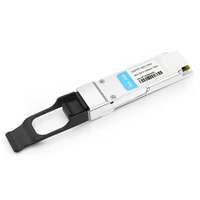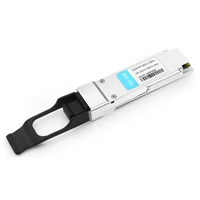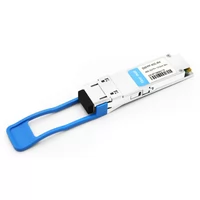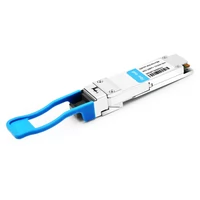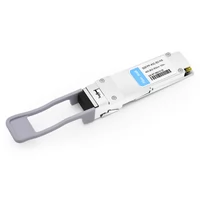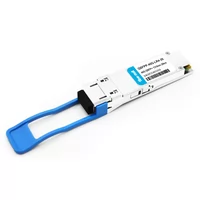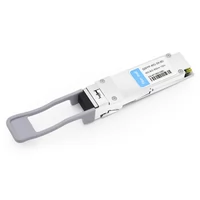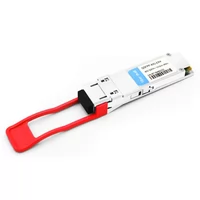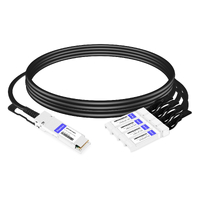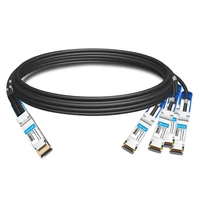Efficient and consistent data transmission is significant in the rapidly changing technological environment. Without a doubt, in high-speed networking environments, Cisco QSFP (Quad Small Form-Factor Pluggable) optical transceiver modules are essential. This guide aims to give you a complete idea of various types of Cisco QSFP modules and their characteristics and uses. Whether you’re an IT professional trying to improve the performance of your data centers or a network engineer who needs more detailed technical specifications, this guide should help equip you with enough knowledge on how best to make decisions concerning Cisco’s optical transceivers. When we finish reading this article, we will know better what can be accomplished by implementing Cisco QSFPs into our network infrastructure.
Table of Contents
ToggleWhat is a Cisco QSFP Optical Transceiver Module?
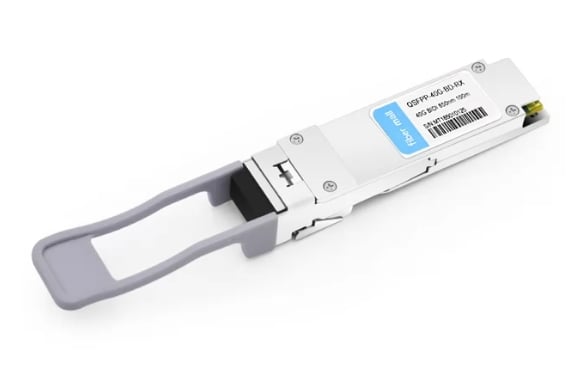
Understanding the Cisco QSFP Format
The QSFP standard was followed by Cisco’s QSFP optical transceiver modules, which were created for fast data transmission. The QSFP+ can work with 100 Gbps and more because it supports data rates up to 100 Gbps and beyond. This makes the format appropriate for high-performance networking environments. There are different types of Cisco QSFP modules like: QSFP+, QSF28, and QSFP-DD – each with capabilities that match various networking requirements. The modules allow hot swapping, which means they can be installed or replaced quickly without affecting any operation on the network. In addition to this feature, most Cisco QSFPs support multiple protocols such as Ethernet, Fiber Channel, Infiniband, etc., thus making them versatile enough for use in different networking scenarios where heterogeneousness may exist among other devices connecting through the same network link/infrastructure segment.
Key Features of a QSFP Transceiver Module
Known for their strong capabilities and reliability in today’s networking systems are the QSFP transceiver modules. These advanced features include:
- Fast Data Throughput: To cope with the increasing need for data-intensive applications, QSFPs support very high bandwidths ranging from 40Gbps (QSFP+) up to 400Gbps (QSFP-DD).
- Hot-swappable functionality: Without shutting down the system, they can be inserted or removed, which ensures minimum interruption time and continuous network operation.
- Compatibility to various devices: Ethernet, Fibre Channel, InfiniBand among other protocols can work effectively with QSFP transceivers thus allowing them to be used in different applications.
- Energy Saving Ability: Low power consumption by these devices helps cut operational costs without compromising performance levels.
- Better Reaching Distance and Connectivity Options: This type of module supports short links over Multi-Mode Fiber (MMF) as well as long ones across Single-Mode Fiber (SMF).
- Form Factor Integration: With their small sizes and light weights, QSFP modules can easily fit into densely populated networks while leaving enough room for other components.
Typical Uses in Data Centers and High-Performance Computing
For the sake of fast data transfers and strong network performance, QSFP transceiver modules are necessary in data centers and high-performance computing (HPC) environments. These types of modules commonly find use in the applications listed below:
- Top-of-Rack (ToR) Switching: Employed within ToR switch configurations, these facilitate interconnectivity among servers as well as core network switches at very high speeds thus contributing towards effective movement of information across various parts of a given data center.
- High-Speed Interconnects: For tasks like wide scale simulations or scientific computations where there is need for quick low-latency data transfer between different nodes; this can only be possible through the use of HPC system with such type connectivity provided by QSFP module.
- Cloud Computing Infrastructure: To achieve scalable, flexible networking solutions that enable seamless resource sharing among virtual environments hosted on cloud services, data centers must be equipped with these kinds of transceivers so they can support such networking structures.
- Storage Area Networks (SANs): Storage devices need enhanced access speed and storage performance, so QSFP modules play a significant role by providing them with a higher bandwidth connection, which improves their overall efficiency when used together with servers, especially those located far apart.
- Network Aggregation: In scenarios where several low-bandwidth channels are being combined into one high-bandwidth pathway to increase the total network efficiency and throughput; such an optimization will require QSFP transceivers.
How Does a Cisco QSFP-40G-SR4 Module Work?
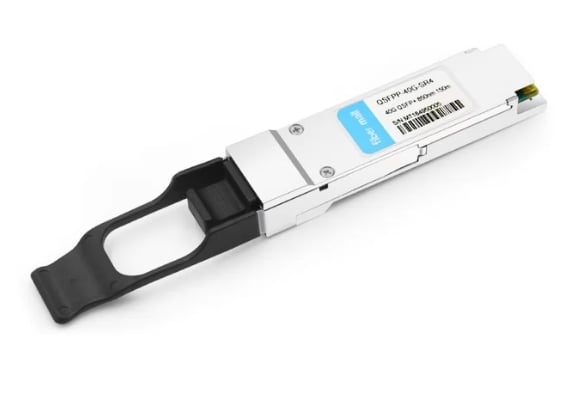
Operational Principles of 850nm 150m Transceivers
The Cisco QSFP-40G-SR4 module works on the principle of short-distance optical communication with a wavelength of 850nm. This transceiver for multimode fibers is designed for data transmission up to 150 meters over OM3 or OM4 fiber types. The module has four independent full-duplex channels, each able to transmit at 10 Gbps, thus aggregating to a total data rate of 40 Gbps.
The process commences when electrical input signals are converted to optical signals by Vertical-Cavity Surface-Emitting Lasers (VCSELs) that emit light at 850nm, which is then transmitted through fiber optic cable. On the receiving end, photodetectors convert optical signals back into electric ones, ensuring efficient and high-speed data communication. Such architecture enables low-latency, high-throughput transfers between different points of presence within data centers or HPC environments where such capabilities are required.
Compatibility with Multimode Fiber (MMF)
The Cisco QSFP-40G-SR4 module supports multimode fiber (MMF), such as OM3 and OM4. These types of fibers are used for transmitting data over short distances where an OM3 fiber can go up to 100 meters while an OM4 fiber can reach 150 meters at a speed rate of 40Gbps. This feature guarantees optimal performance and cost-effectiveness in data centers or enterprise networks with confined spaces that require high bandwidth connections nearby each other. The use of MMFs lowers infrastructural expenses yet maintains fast communication because it still supports high-speed data through the QSFP-40G-SR4 module’s 850nm wavelength.
Understanding 40G Ethernet Connectivity Options
To understand the options for 40G Ethernet connectivity, it is important to consider different transceiver modules and cabling standards. Choices include direct-attach copper cables, active optical cables (AOCs), and various optical transceivers, such as QSFP+ modules.
- Direct Attach Copper (DAC): These are cost-effective and power-efficient solutions that are mainly used for short-range connections of up to 7 meters between racks or adjacent types of equipment in data centers.
- Active Optical Cables (AOCs): They have built-in transceivers which enable them cover much longer distances than DACs, reaching up to 100 meters; AOCs are best suited where high flexibility with extended reach is required within a data center environment.
- QSFP+ Optical Transceivers: These transceivers are compatible with both single-mode and multimode fibers and offer flexibility for different distances. For example, QSFP-40G-SR4 works with OM3 and OM4 fibers and allows up to 150 meters at low latency, thus making it ideal for high-density data centers.
Each option has its own benefits depending on specific application needs, thus providing reliable 40G Ethernet connections designed for diverse networking scenarios.
What are the Benefits of Using Cisco QSFP Transceivers?
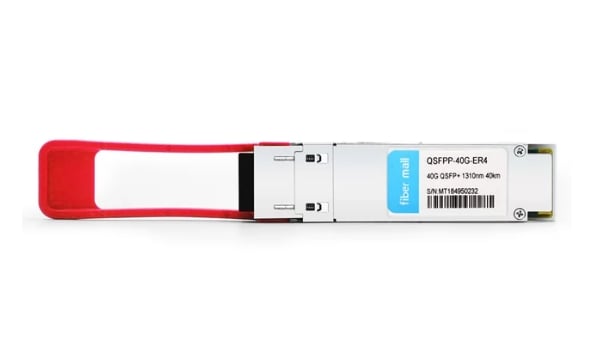
Enhanced Performance in Enterprise Core and Distribution Networks
Cisco QSFP transceivers guarantee better performance in a corporate network’s core and distribution areas by offering low-latency, high-bandwidth connections necessary for contemporary data-intensive applications. This variety of transceivers supports different rates of data transfer as well as protocols so that they can be easily integrated into any infrastructure without decreasing interoperability between systems. Cisco QSFPs work based on advanced optical technologies that ensure a strong and stable connection with little signal loss, which is very important for the efficient functioning of the whole network through maintaining the integrity of information transmitted over it. Besides this, there are some other useful features, such as Digital Optical Monitoring (DOM), thanks to which managers can more effectively control their networks by detecting real-time troubles and solving them quickly, thus reducing operational costs and optimizing overall performance. Such devices like those produced by Cisco are necessary for enterprise environments because they provide scalability at various levels, including resilience within large organizations with many branches or subsidiaries all connected together via wide area networks (WANs).
High-Density Connectivity for Data Centers
To conserve space in data centers and simplify cable management, Cisco QSFP transceivers allow for high-density connectivity. These transceivers permit the combination of multiple 10G links into one 40G link, therefore reducing the total number of physical connections required. This lowers the risk of cabling errors and makes maintenance and scalability easier. It is possible to flexibly deploy them in different network topologies because the QSFP form factor is compact and modularized. Additionally, Cisco QSFP transceivers can work with a variety of switch and router platforms, thus ensuring that there is interoperability for dynamic and evolving data center environments. Consequently, cloud services, as well as virtualization technologies, require such types of connections to cater to their increased bandwidth needs while keeping latency at minimum levels, which leads to faster information processing speeds within these facilities
Advantages of QSFP Optics in High-Performance Computing
In high-performance computing (HPC) environments, QSFP optics brings many benefits. First and foremost, it has expansive bandwidth capacities that can support data rates of up to 100Gbps, which is necessary for the high data transfer demand common with HPC applications. Secondly, energy efficiency is improved by using QSFP transceivers; this is achieved by utilizing advanced technologies to reduce power consumption compared to older transceiver models. The outcome delivers significant savings on operational costs and less damage to the environment caused by such reductions in power usage. Thirdly, these modules are designed small enough to take less space within network equipment but still retain modularity, thereby increasing the number of ports per device, leading to better space utilization and simplified cabling infrastructure throughout networks. Fourthly, these devices show low latency figures, which are crucial factors for maintaining good computational performance since such systems are expected to process data and run applications with low tolerance levels toward delays. Finally, its interoperability coupled with scalability guarantees effortless integration into any existing networking framework, thus enabling smooth expansion capabilities while ensuring the adaptability of HPC clusters vis-à-vis changing requirements in terms of computation powers needed over time.
How to Choose the Right Cisco QSFP Optical Transceiver Module?
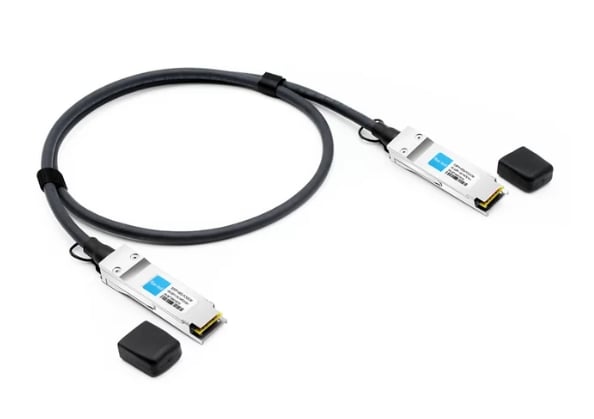
Criteria for Selecting Compatible QSFP Modules
To guarantee that your network infrastructure works optimally, you should take into account some points when choosing QSFP modules that can work together with each other:
- Requirements of Data Rate: Ascertain whether the QSFP module supports the data rate your application needs like 40Gbps or 100Gbps so as to cater for the bandwidth requirements of your network.
- Distance and Fiber Type: Check if it can be used over single-mode or multi-mode fiber cables by looking at the supported transmission distance. This will help you match this transceiver with your network’s physical layout and distance requirements.
- Compatibility Between Different Vendors’ Modules: Ensure that there is no performance degradation while using modules from various vendors in one environment; they must work together without any problems.
- Power Consumption: Evaluate how much power these devices consume since low-power models save money on operations while reducing heat generation in DCs.
- Budget and Cost Efficiency: Consider initial investments against future savings on energy usage and operational reliability when selecting affordable but reliable modules.
- QSFP Module Compatibility: Verify if it connects easily with other devices, such as switches, routers, etc., that are already installed within an existing setup, thereby preventing connectivity challenges during the integration process.
These organizations set certain standards, namely ANSI TIA/EIA-568-C series (USA) and ISO/IEC 11801 Ed2 (International).
Considerations for Different Ethernet Connectivity Options
When I look at the many ways that Ethernet can be connected to a network, there are a few key things I think about in order to make my choice as informed as possible. One of the first things that I do is evaluate my application’s speed needs by looking at different data rates and their availability – 10GbE, 25GbE or even up to 100GbE if necessary. After this step has been completed successfully, then comes deciding on physical media types, which may include either copper cables or fiber optic cables, depending upon what will work best with performance levels desired alongside distance requirements (fiber typically being faster over longer distances). Another thing worth considering is whether or not an ethernet solution is compatible with my current infrastructure because it could mean having to buy new devices that support these standards or not being able to use them altogether. To add onto this point, though, one should also check out industry standardization support and compatibility between different vendors’ equipment – so that everything works together smoothly without any issues arising later down the line due to incompatible hardware/software combinations. All these factors taken from various reputable online sources should help me find out which option would be most suitable for improving reliability throughout networks while still ensuring network improvements happen wherever possible based on available resources!
MMSA Compliancy and Optics Specifications
To answer the question around MMSA compliance and optics specifications, you must be keen on certain things. Number one is making sure that it conforms to multi-source agreement standards, which are all about compatibility between different manufacturers’ products. This should include checking if it also meets other relevant specifications like SFP+ for 10GbE, QSFP+ for 40GbE, and QSFP28 for 100GbE.
Evaluate detailed optic specs such as wavelength, transmission distance, and power budget against your network needs. Also, take into account form factor, temperature range, and digital diagnostic monitoring capability, which provides for real-time monitoring of parameters such as optical output power, laser bias current, or temperature.
It is essential to ensure reliability and efficiency in deploying optical transceivers within our network infrastructure by following MMSA compliance requirements and thoroughly scrutinizing fiber optical properties.
What is the Role of Cisco QSFP-4X10G-LR-S in Modern Networks?
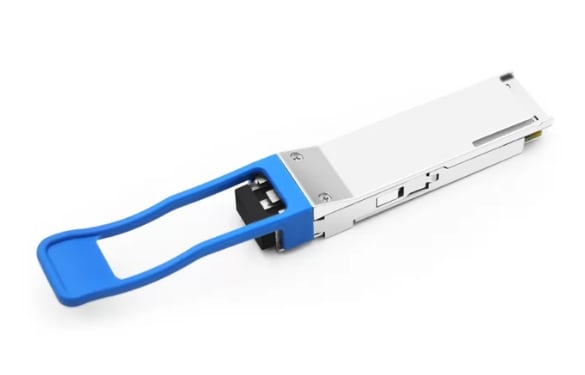
Overview of the QSFP-4X10G-LR-S Module
The Cisco QSFP-4X10G-LR-S module is important in contemporary network designs for its ability to send data quickly over long distances. This quad small form-factor pluggable (QSFP) module supports 40 Gigabit Ethernet (40GbE) through four independent 10GbE lanes, which means it can scale easily and perform better than most others. It is typically used for inter-switch links, data centers, and high-performance computing networks.
The QSFP-4X10G-LR-S is a long-distance transceiver that operates on single-mode fiber (SMF) up to 10 km, thus being suitable for large installations. It complies with the IEEE 802.3ae 10GBASE-LR/LW standard and 40GBASE-LR4; this guarantees compatibility with currently deployed infrastructures. In addition to these features, the module consumes less energy and has strong diagnostic functions while meeting industry requirements, hence making it dependable where there are high traffic volumes on networks.
Advantages and Applications in Data Centers
In data centers, the Cisco QSFP-4X10G-LR-S module has several advantages. First, it can flexibly support 40GbE and 10GbE lanes, ensuring that network infrastructure is scalable enough to meet the growing bandwidth needs of different times. Second, by using a single-mode fiber (SMF) optic cable, this module can reach up to 10 kilometers, thus making the interconnection between distant geographical areas possible, which in turn leads to streamlined operations and reduced latency.
Regarding applications, the QSFP-4X10G-LR-S is very useful for inter-switch connectivity because it provides quick connections between aggregation and core switches. This helps improve networks’ overall performance while enhancing data flow management. Also, its compliance with IEEE standards means it can be integrated into other systems without any problem, facilitating compatibility among various devices used within an organization or even across different institutions if needed. Additionally, energy efficiency saves power, reducing costs incurred, especially when running large-scale data centers. It also considers environmental concerns since less electricity will be wasted during operation periods.
Understanding Connector Types and Breakout Cables
Data center infrastructure can be configured and optimized using breakout cables and connector types. Normally, the QSFP-4X10G-LR-S module uses LC connectors to interface with single-mode fiber (SMF). These small-sized LC connectors allow more room for networking equipment.
On the contrary, breakout cables split a single high-bandwidth connection into several lower-bandwidth connections. For QSFP-4X10G-LR-S modules, a QSFP+ to 4x SFP+ breakout cable is commonly applied. In this setup, one 40GbE connection can be separated into four 10GbE connections, which allows for flexibly designing networks and scaling them up or down as required.
Data centers can optimize their overall network throughput and high-density installations by using appropriate breakout cables and connector types. This enables networks to adjust themselves according to different bandwidth needs while still reliably performing at peak levels.
Reference Sources
Frequently Asked Questions (FAQs)
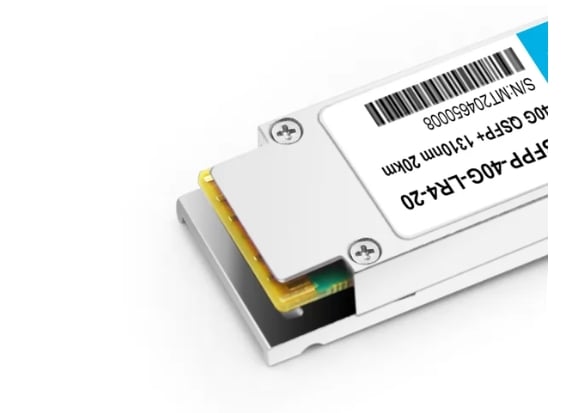
Q: What is a Cisco QSFP Optical Transceiver Module?
A: The Cisco QSFP Optical Transceiver is a compact module for data communications applications that is hot-pluggable and produced by Cisco. It provides high-speed connectivity options in high-density data centers, including Ethernet options for data.
Q: Explain the abbreviation QSFP.
A: It stands for Quad Small Form-Factor Pluggable, a type of optical transceiver module designed to support higher data rates and denser networking environments.
Q: Give examples of some widely used types of Cisco QSFP Modules.
A: The following are among commonly used types; Cisco QSFP-40G-SR4 compatible 40GBASE-SR4 QSFP, Cisco QSFP-40G-SR4 compatible QSFP, 40G and QSP modules. These modules provide various high-density Ethernet connectivity options.
Q: Differentiate between MMF and SMF optical transceiver modules.
A: MMF (Multimode Fiber) optical transceiver modules, such as 40G optic transceivers, are meant for shorter distances of up to 150 meters using OM4 multimode fiber. In comparison, SMF (singlemode fiber) transceivers support longer distances over single-mode fiber cables.
Q: Are there any industry standards that Cisco Qsfp Modules follow?
A: Yes, they comply with MSA (Multi-Source Agreement) standards to work with other compatible transceivers and network devices made by different manufacturers.
Q: What types of data rates are supported by Cisco QSFP Transceivers?
A: Cisco QSFP transceivers support various data rates, such as 40Gbps for 40GBASE-SR4 QSFP modules. This gives clients a wide range of high-density Ethernet connectivity options for their data center applications.
Q: How can we connect networking devices with QSFP transceivers?
A: Generally, we put QSFP transceivers into QSFP ports on network switches. Direct connection between QSFP devices can be made through QSFP to QSFP copper direct-attach cables within shorter distances and optical links over longer distances.
Q: What is meant by support link lengths in a QSFP module?
A: Supporting link lengths show the maximum distance that the module can cover while transmitting data reliably. For example, certain types of QSFPS modules support link lengths up to 100 meters over OM4 multimode fiber.
Q: Are there any compatible 40G QSFP transceivers available?
A: Yes, Cisco is providing different compatible 40G QSFP transceivers, including the Cisco 40GBASE-QSFP and other compliant transceivers, for diverse connectivity options.
Q: Why should I use high-density QSFP modules?
A: High-density QSFP modules allow organizations to make the most of their limited space in data centers while providing strong and scalable Ethernet connectivity options for data. This helps enhance the overall performance and efficiency of networks.
Related Products:
-
 Cisco QSFP-40G-SR4-S Compatible 40G QSFP+ SR4 850nm 150m MTP/MPO MMF DDM Transceiver Module
$25.00
Cisco QSFP-40G-SR4-S Compatible 40G QSFP+ SR4 850nm 150m MTP/MPO MMF DDM Transceiver Module
$25.00
-
 Cisco QSFP-40G-CSR4 Compatible 40G QSFP+ CSR4 850nm 400m MTP/MPO MMF DDM Transceiver Module
$30.00
Cisco QSFP-40G-CSR4 Compatible 40G QSFP+ CSR4 850nm 400m MTP/MPO MMF DDM Transceiver Module
$30.00
-
 Cisco WSP-Q40GLR4L Compatible 40G QSFP+ LR4L 1310nm (CWDM4) 2km LC SMF DDM Transceiver Module
$129.00
Cisco WSP-Q40GLR4L Compatible 40G QSFP+ LR4L 1310nm (CWDM4) 2km LC SMF DDM Transceiver Module
$129.00
-
 Cisco QSFP-40G-PLRL4 Compatible 40G QSFP+ PLRL4 1310nm 1.4km MTP/MPO SMF DDM Transceiver Module
$139.00
Cisco QSFP-40G-PLRL4 Compatible 40G QSFP+ PLRL4 1310nm 1.4km MTP/MPO SMF DDM Transceiver Module
$139.00
-
 Cisco QSFP-40G-BD-RX Compatible 40G QSFP+ SR Bi-Directional 850nm/900nm 100m/150m Duplex LC MMF Optic Module Receiver Only
$165.00
Cisco QSFP-40G-BD-RX Compatible 40G QSFP+ SR Bi-Directional 850nm/900nm 100m/150m Duplex LC MMF Optic Module Receiver Only
$165.00
-
 Cisco QSFP-40G-LR4-20 Compatible 40G QSFP+ LR4 1310nm CWDM4 20km LC SMF DDM Transceiver Module
$175.00
Cisco QSFP-40G-LR4-20 Compatible 40G QSFP+ LR4 1310nm CWDM4 20km LC SMF DDM Transceiver Module
$175.00
-
 Cisco QSFP-40G-SR-BD Compatible 40G QSFP+ SR Bi-Directional 850nm/900nm 100m/150m Duplex LC MMF Transceiver Module
$249.00
Cisco QSFP-40G-SR-BD Compatible 40G QSFP+ SR Bi-Directional 850nm/900nm 100m/150m Duplex LC MMF Transceiver Module
$249.00
-
 Cisco QSFP-40G-ER4 Compatible 40G QSFP+ ER4 1310nm (CWDM4) 40km LC SMF DDM Transceiver Module
$449.00
Cisco QSFP-40G-ER4 Compatible 40G QSFP+ ER4 1310nm (CWDM4) 40km LC SMF DDM Transceiver Module
$449.00
-
 QSFP-4SFP-PC50CM 50cm (1.6ft) 40G QSFP+ to Four 10G SFP+ Copper Direct Attach Breakout Cable
$25.00
QSFP-4SFP-PC50CM 50cm (1.6ft) 40G QSFP+ to Four 10G SFP+ Copper Direct Attach Breakout Cable
$25.00
-
 QDD-4Q56-400G-PC1M 1m (3ft) 400G QSFP-DD to 4x100G QSFP56 PAM4 Passive Breakout Direct Attach Copper Cable
$123.00
QDD-4Q56-400G-PC1M 1m (3ft) 400G QSFP-DD to 4x100G QSFP56 PAM4 Passive Breakout Direct Attach Copper Cable
$123.00

